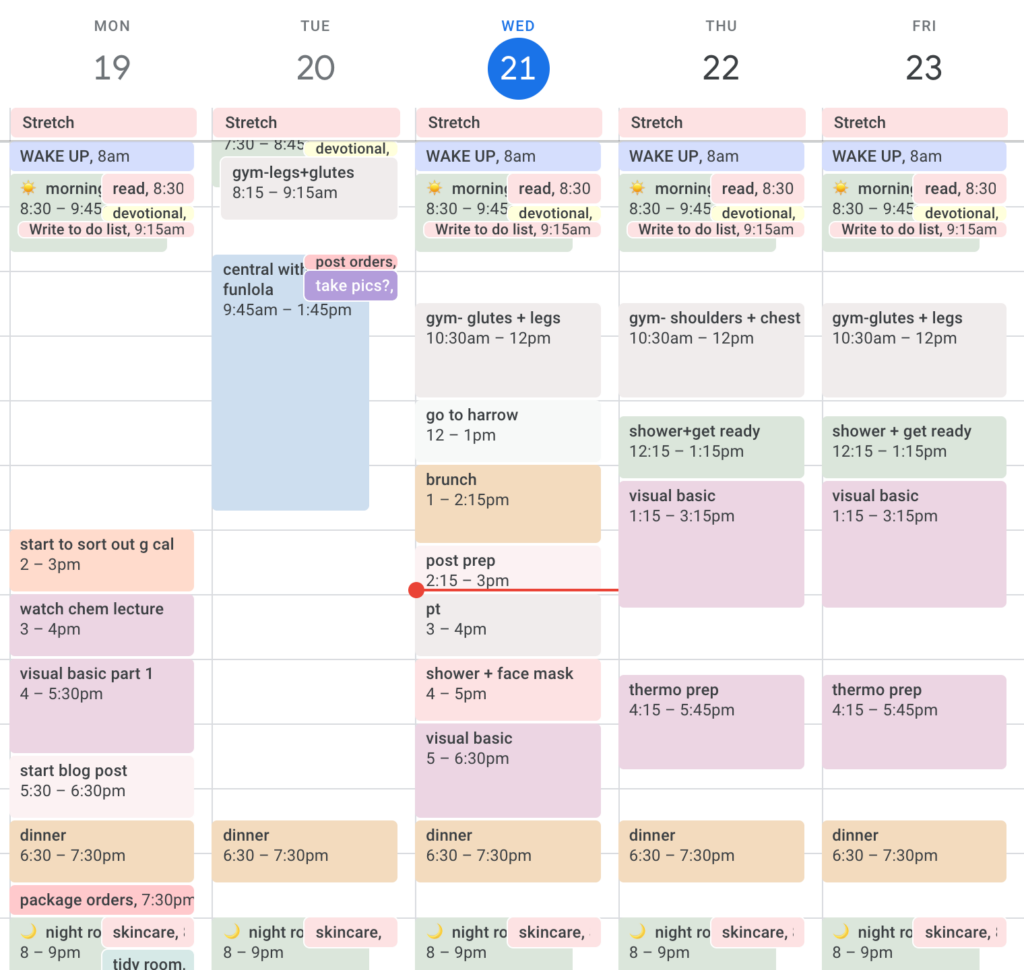Creating a content calendar is essential for staying organised and consistent with your social media posts. In the fast-paced world of social media, where trends change rapidly and audience expectations are high, a well-planned content calendar acts as your roadmap. It not only ensures that your content is timely and relevant, but also aligns seamlessly with your overall marketing strategy, helping you achieve your business goals more efficiently. With a structured approach, you can plan ahead, avoid last-minute rushes, and maintain a steady flow of high-quality content that resonates with your audience. Here’s how to effectively plan your content and make the most out of your social media presence.

1. Define Your Goals
Start by defining your social media goals. What do you want to achieve with your social media presence? Do you want to become a full time content creator, post educational content, build your business? Clearly identifying your objectives is crucial as it will guide your content creation and strategy. Whether you aim to increase followers, boost engagement, enhance brand awareness, drive traffic to your website, generate leads and sales, or improve customer service, setting specific goals will help you tailor your content effectively. For instance, growing your audience may involve creating shareable content and collaborating with influencers, while boosting engagement might focus on interactive posts like polls and Q&A sessions. By having well-defined goals, you can create a focused and efficient social media strategy that yields measurable results.
2. Choose Your Platforms
Identifying which social media platforms are most relevant to your audience is crucial for maximizing your impact and efficiency. Start by researching where your target demographic spends their time online. For instance, if you are targeting a younger audience, platforms like TikTok and Instagram are likely to be more effective. On the other hand, LinkedIn might be more suitable for a professional audience, while Facebook can cater to a broader age range. Focusing your efforts on the right platforms allows you to tailor your content to the specific features and audience behaviors of each, thereby increasing engagement and achieving your social media goals more effectively. This targeted approach not only saves time but also ensures that your resources are being used in the most impactful way possible.

3. Plan Your Content Themes
Determine the main themes or topics you want to cover in your content. This step is crucial for maintaining consistency and relevance across your social media platforms. By identifying overarching themes, you can strategically align your content with your brand's messaging and audience interests. For example, if you're a fashion brand or creator, your themes might include seasonal trends, styling tips, behind-the-scenes looks, and customer testimonials. Planning these themes not only ensures that your content remains focused but also helps in building a cohesive narrative that resonates with your audience.
4. Create a Posting Schedule
Decide how often you will post on each platform and create a schedule that aligns with your audience's preferences and behavior patterns. Consistency is crucial for maintaining engagement and visibility on social media. By establishing a regular posting schedule, you can keep your audience informed and engaged without overwhelming them with content. For instance, if your audience is most active in the mornings and evenings, schedule your posts accordingly to maximize reach and interaction. Additionally, consider using social media management tools that allow you to schedule posts in advance, ensuring a steady flow of content even during busy periods.
5. Use a Content Calendar Tool
Utilise tools like Google Calendar, Trello, or dedicated social media management platforms to plan and schedule your posts efficiently. These tools offer a range of features to help you stay organised and consistent with your social media content. For instance, Google Calendar allows you to set up recurring events for regular posting times, helping you maintain a consistent schedule. Trello provides a visual way to organise your content ideas and tasks, making it easy to track progress and manage deadlines. Social media management platforms like Buffer or Hootsuite offer scheduling capabilities across multiple platforms, allowing you to plan posts in advance and analyse their performance. By using these tools effectively, you can streamline your content planning process and ensure that your posts are published at optimal times for maximum engagement.

6. Monitor and Adjust
Regularly review your content calendar to assess the performance of your posts and make necessary adjustments. Utilise analytics tools provided by social media platforms to gather insights into engagement metrics such as likes, comments, shares, and click-through rates. Analysing this data helps you understand which types of content resonate most with your audience and which ones may need refinement. For instance, if posts related to specific themes or formats consistently receive higher engagement, consider allocating more resources to creating similar content in the future. Conversely, if certain posts are underperforming, explore alternative approaches or topics that may better align with your niche and audience's interests. By continuously monitoring and adjusting your content strategy based on analytics, you can optimise your social media presence and enhance overall engagement and effectiveness.
7. Engage with Your Audience
Allocate dedicated time in your schedule to actively engage with your audience by responding to comments, messages, and mentions. Engaging directly with your followers not only strengthens relationships but also fosters a sense of community around your brand or content. Show genuine interest in their feedback, questions, and concerns to demonstrate that you value their input. This interaction not only encourages more meaningful conversations but also enhances trust and loyalty among your audience. Additionally, proactively initiate discussions by posing questions or conducting polls to encourage participation and feedback. By consistently engaging with your audience, you can cultivate a loyal following and build a supportive community around your social media presence.

Developing and maintaining a successful social media strategy requires dedication, planning, and adaptability. By implementing these key practices—defining goals, planning content themes, creating a posting schedule, using a content calendar tool, monitoring analytics, and engaging with your audience—you can enhance the effectiveness of your social media efforts. Consistency in posting and responsiveness to audience interactions are essential for building a loyal following and fostering meaningful connections. As you navigate the dynamic landscape of social media, continue to refine your strategy based on insights and feedback. By staying proactive and attentive to trends and audience preferences, you can optimise your social media presence and achieve your goals with greater impact and engagement.

